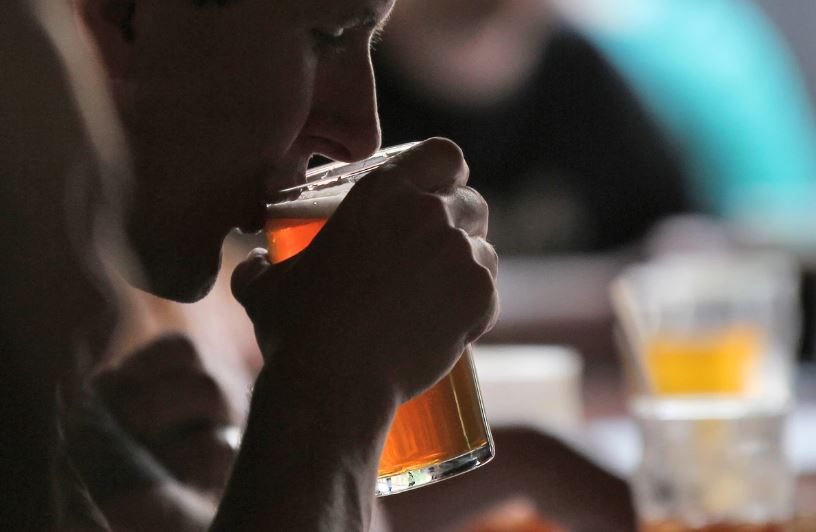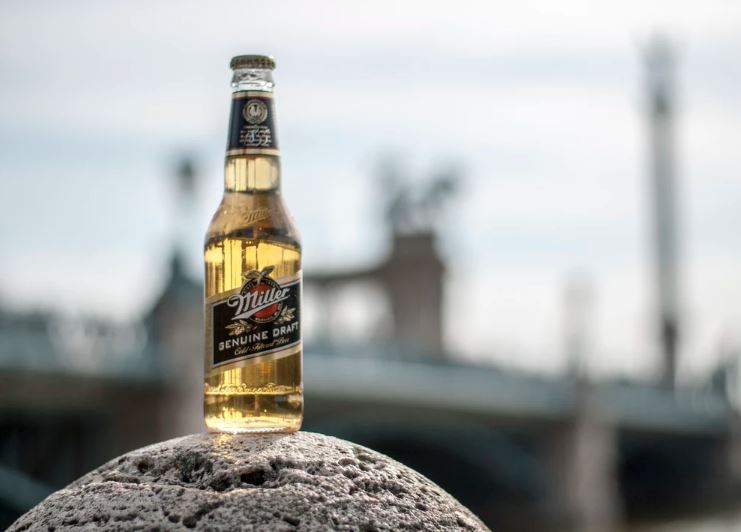For many beer drinkers, American-Style lager either means a delicious, all-American gold, or a craft beer snob’s beer you love to hate.
Whatever your opinion of American-Style lager beer, brewing a lager beer is a much different story than drinking one. American-style lager—a beer both fiercely loved and lamented by those who love-to-hate. All beer is either an ale or a lager, and lagers are, in fact, more challenging to brew than their ale counterparts. Considering the additional skill, time, and effort needed to brew a solid lager beer, why is there so much drama surrounding the American-style lager in particular?
Perhaps the biggest argument against the American-style lager beer is that it has next to zero flavor, body, or aroma. For both brewers and beer drinkers the world over, this is precisely the WRONG way to make a beer. Beer—be it ale or lager—should be a tasty beverage designed to excite and enliven the senses; not dull them with blandness.
And yet, American-style lagers have long been thought of as precisely that. Why?
What happened to Americans and their love of good beer? Why do many still champion American-style lager as the king of all beers? How did we get here, and will the American-style lager ever shed this reputation and find its way back to flavor?
A Brief History of Lager Beer: From Zero to Hero
The lager style of beer originated in Germany during the mid-1800s and grew wildly popular across all of Europe almost overnight. People fell in love with the light, refreshing, and flavorful clear lager beer. Before the emergence of the clear golden lager, all beer fit into the “ale” style of classification. Ales, in general, were heavier, cloudy-to-opaque, and tended to be both easier and faster to brew.

When the lager style first emerged, it was differentiated from ales by its light body, golden straw color, clean, crisp flavors, and the beer’s tendency to be carbonated. Lager beer yeast strains do not provide the fruity flavors and aromas of ale yeast, offering a further differentiation from their ale cousins.
Lager beer is created using bottom-fermenting yeast strains and is fermented at colder temperatures than ale fermentation. Lager yeast is referred to as bottom-fermenting yeast because it drops to the bottom of the tank when it is done fermenting, while ale yeast instead floats to the top of the tank.
Lager comes from the German word, “lageren,” which means “to store.” Lager beers take longer to craft because lager yeast strains require colder temperatures to ferment the wort, significantly slowing the fermentation process. Thus, the wort was brewed, the yeast was added, and then the barrels of soon-to-be-lager beer was stored—usually for many months. Also referred to as cellaring, storing beer at cooler temperatures first occurred underground—likely discovered by accident, but has become a popularly advertised part of the process with American-style lagers.
American-Style Lager’s Story Of Misfortune
During the 19th century, Americans were happily consuming European beer at the time when lager first emerged. Barley, one of the main grains used in Europe for beer, did not grow well in America, resulting in the need to import beer from Europe. As one might suspect, this was expensive and often cost-prohibitive.
American brewers turned to local grains that grew well here, replacing portions of the malt with corn, squash, wheat, rye, and rice—in essence, they tried many types of grains and even grain-like items to create good beer at home.
As Americans were experimenting with alternative brewing solutions, large populations of German immigrants were also coming to the country. These immigrants brought their love of German beer with them, and of course, their knowledge of lager brewing techniques.
Wanting to recreate their popular lagers, these now American-German brewers with their proudly German beer-centric palates sought to craft lagers in their new home. Like their American counterparts, these German brewers were forced to turn to alternative sources of grain for their malt bills.
These new American-style lagers turned out far better than the traditional European Ale styles that American brewers had been struggling with. The introduction of German lager brewing techniques to American palates was the spark that ignited the same lager beer flame that had already taken Europe by storm.
Soon, the quest for lighter, more neutral-tasting beer became a focus for American brewers due to a variety of customer demand-driven reasons—arriving in the style of the Bohemian Pilsner. Even lighter and more neutral-tasting than the lager style, pilsners were rapidly adopted by Americans and their demand for a lighter beer.
Perhaps the greatest blow to American-style lager’s reputation was the tragedy of Prohibition. For thirteen years, Prohibition destroyed the previously thriving alcohol industry, resulting in a population of consumers who mostly forgot what good beer tasted like.
After the repeal of Prohibition in 1933, Americans had now forgotten what beer was supposed to even taste like and had developed palates that were more accustomed to the flavors of soda-pop—or worse, bootleg beer and spirits.
The Great Depression, grain restrictions during World War II, and nearly a century of American brewing tradition focused on producing bland, neutral lagers resulted in what we now know of as the American-style lager.
An American Renaissance: The Craft Beer Revolution

Due to the emergence of micro craft breweries near the end of the 20th century, American brewing traditions have been not only revitalized, but we have been experiencing a renaissance in brewing beer.
American craft beer has made such an impact upon the rest of the world. Americans have influenced European brewers for the first time.
Even Reinheitsgebot—the German beer purity law of 1567—is under consideration for revisions to its original lawful definition in response to the growth of craft breweries globally made popular by the American beer renaissance.
The American reputation of brewing cheap-dirty-swill-water-we-like-to-call-beer is fading from memory, but we still have a way to go. The American-style lager, in particular, suffers (or thrives) from this prejudice because of the existence—and booming popularity—of beers brewed by the beer giants Miller-Coors, Anheuser Busch, and the like.
Despite the craft beer revolution, there are still plenty of American beer drinkers that want and love the American-lager style of old.
“I don’t want any of that weird beer, just give me a normal beer like (major brand name here),” they say.
And while we as brewers may disagree, this doesn’t mean that they’re wrong.
Brewing the Best American-Style Lager—The American Craft Way
American-style lagers may mean different things to different people, but you’re here because you want to brew the best American-style lager you can. Regardless of your target audience, the following advice will help you brew the best American-style lager you can brew.
1. More Yeast (Like, A Lot More)
Lager yeast has a slower metabolism than ale type yeasts because lager yeasts are happiest—and hungriest—at temperatures between 45–55oF (7–13oC). Like all animals, the colder the environment, the slower the metabolism. So pitch a lot of yeast and pitch it into cold wort, not room temperature. Plan for at least twice as much lager yeast as you would for an ale of the same gravity.
2. Temperature Control: Lager Yeast Love It Cold

Temperature control is vital to the success of lager brewing. Your primary fermentation should take place somewhere around the aforementioned temperature range, followed by a period of weeks or months of maturation (lageren: to store). Your brewery should be prepared to handle temperature-controlled storage space. You can’t brew a lager if you can’t keep it cold.
3. Chill Your Wort
Room temperature wort is bad news for lager beer, so chill your wort down to the appropriate temperature first before pitching your yeast. This will prevent unwanted esters from appearing, which occurs by a premature (unintended) initial fermentation. Adding yeast when the wort is warm is likely to create this early fermentation in your lager, so be sure not to do this—chill your wort first!
4. Patience
Crafting a great lager takes time; way more time than the 2-6-week process of crafting an ale. Again, lager yeast likes it cold, and if you’re going to be creating an American-style lager that’ll make your European brethren jealous, then you’d better demonstrate some patience and trust your yeast to do their thing.
5. Use True Lager Yeast Strains and Cultures
While this may seem obvious, we’re going to say it anyway. You won’t get an authentic lager, let alone craft the next great American-style lager without the right yeast. As a brewer, don’t cut corners and bother with dry yeast—use the best liquid yeast strains and cultures that you can get your hands on. Liquid yeast will give you much better and far more consistent results, a key consideration to reproducing your product over and over again.
6. Use A Yeast Starter
Again, this relates to the colder temperatures required by lager yeast. Using a yeast starter will help you to prevent what’s known as a “lag period” between first pitching the yeast and when the yeast cells are reproducing for ongoing fermentation. If this lag period occurs, bacteria can reproduce instead of your yeast, contaminating your brew. Use a yeast starter harvested from a previous lager batch or create one a few days before starting the actual brew.
7. The Diacetyl Rest
Lager beer shouldn’t have the sweet flavors imparted from the diacetyl compound produced during fermentation. Because lager beer is all about cold temperatures, offsetting a diacetyl build-up is necessary to prevent this byproduct of yeast fermentation. Using a hydrometer, you’ll want to slowly warm the temperature of your stored lager for somewhere between 2-5 days, and then drop it back down to its conditioning temperatures. This allows the yeast to metabolize and reduce the built-up diacetyl compound, while simultaneously completing the primary fermentation you’ve been waiting so patiently for.
8. Sanitize, Sanitize, Sanitize!
You already know that brewing means high sanitization standards. For lagers, this is even truer than with ales. The long aging period lager yeast requires also provides a window for bacteria to grow and ruin all of your hard work. Be sure to take the extra time and care needed to ensure that everything involved in creating your American-style lager is highly sanitized.
You already know how critical hot water is for your craft brewery. For even more brewery insight, advice, tips, and tricks, visit our blog.
Featured image and post images licensed for use via Unsplash.

